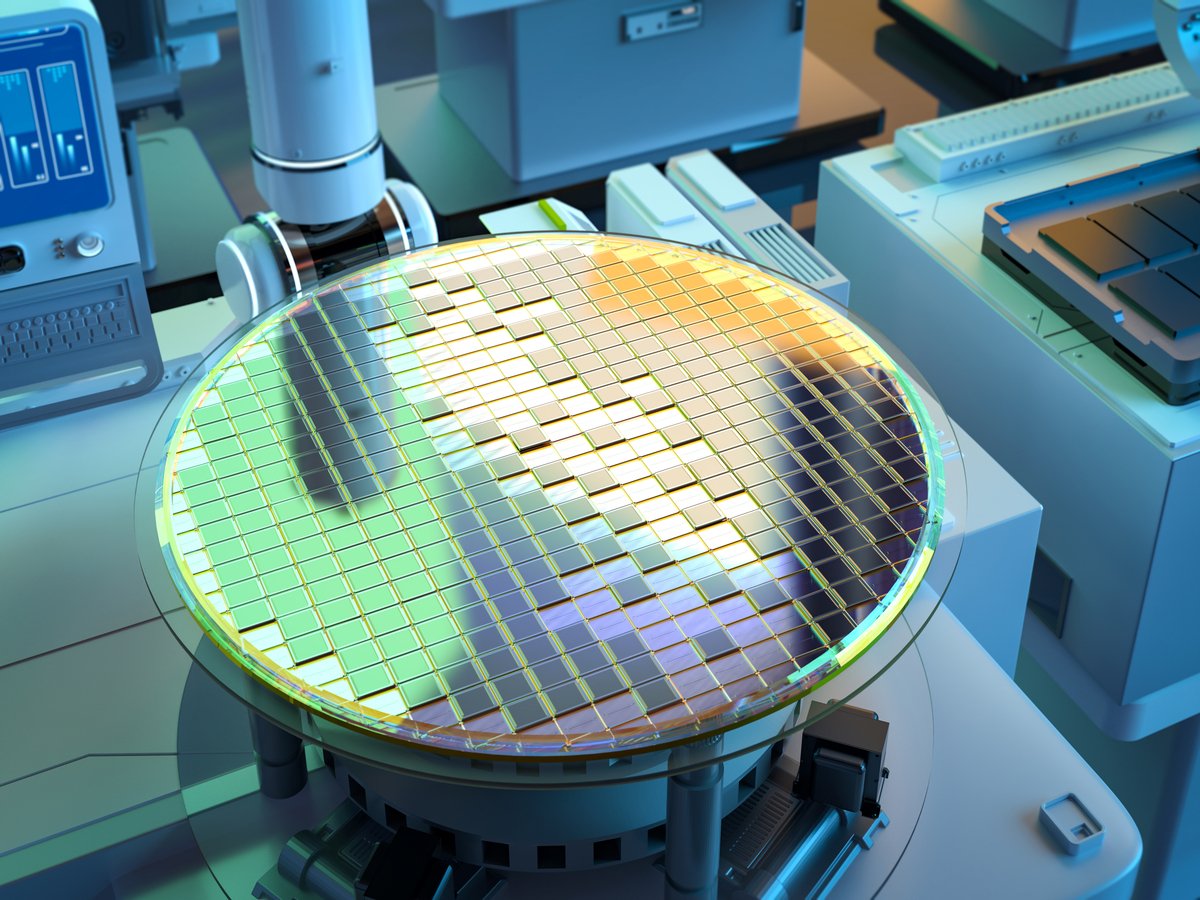ASML Holding (ASML +1.82%), which is based in the Netherlands, is one of the world's most important semiconductor equipment suppliers. It's the top producer of lithography systems, which optically etch patterns onto silicon wafers, and it serves all of the largest chip foundries -- including Taiwan Semiconductor Manufacturing, Samsung and Intel.
ASML's deep ultraviolet (DUV) lithography systems are used to produce older and larger chips. It's also the only producer of high-end extreme ultraviolet (EUV) lithography systems, which are used to produce the smallest, densest, and most power-efficient chips in the world.
Image source: Getty Images.
ASML's monopolization of that technology makes it a linchpin of the semiconductor market. From 2014 to 2024, its revenue grew at a CAGR of 17%, its gross margin expanded from 44.3% to 51.3%, and its EPS rose at a CAGR of 22%. Over the past 10 years, its stock has rallied 610% and delivered a total return of 684% with its dividends.
ASML still seems like a sound long-term investment, but it's pulled back more than 30% from its record closing price of $1,085.93 per share last July. Let's see why its stock cooled off -- and if that pullback represents a compelling buying opportunity for patient investors.

NASDAQ: ASML
Key Data Points
What happened to ASML over the past year?
ASML's net sales rose 14% in 2022 and 30% in 2023. That acceleration was driven by its rising shipments of DUV and EUV systems, the explosive growth of the AI market, stable service and upgrade revenue, and the gradual rollout of its newest high-NA EUV systems -- which are required to mass produce even smaller and denser chips (below the 2nm node) than its current low-NA EUV systems. ASML is barred from shipping its EUV systems to China, but it's still selling plenty of older DUV systems to Chinese chipmakers.
But in 2024, ASML's net sales only rose 3%, its gross margin stayed flat, and its EPS dipped 3%. Its growth cooled off as it lapped the AI market's initial growth spurt, its non-AI markets grew at a slower clip, and it was restricted from shipping some of its higher-end DUV systems to China. Its top customers also reined in their system upgrades.
|
Metric |
Q2 2024 |
Q3 2024 |
Q4 2024 |
Q1 2025 |
Q2 2025 |
|---|---|---|---|---|---|
|
Net Sales Growth (YOY) |
(9.5%) |
11.9% |
28% |
46.4% |
23.2% |
|
Bookings Growth (YOY) |
23.7% |
1.2% |
(22.8%) |
9% |
(0.5%) |
|
Gross Margin |
51.5% |
50.8% |
51.7% |
54% |
53.7% |
|
EPS Growth (YOY) |
(18.7%) |
9.8% |
31.5% |
92.9% |
47.1% |
Data source: ASML. In euros. YOY = Year-over-year.
But in the first half of 2025, ASML's net sales rose by the double digits again as its gross margins expanded. That recovery was driven by AI tailwinds for the DRAM memory chip market, which offset a lot of the pressure from the unpredictable tariffs and tighter export curbs against China, and more upgrades to its high-NA EUV systems.
For the full year, ASML expects its net sales to rise 15% as its gross margin expands by nearly a percentage point to 52%. Analysts expect its revenue and EPS to grow 14% and 24%, respectively. From 2024 to 2027, they expect its revenue and EPS to increase at a CAGR of 10% and 17%, respectively.
We should take those long-term estimates with a grain of salt, but ASML should dominate the crucial EUV market for the foreseeable future. Its stock still looks reasonably valued at 25 times next year's earnings, it pays a forward dividend yield of 1%, and it will remain one of the most straightforward ways to invest in the secular expansion of the semiconductor market.
Therefore, I think it's a great idea to accumulate more shares of ASML this year as the bulls look the other way.


